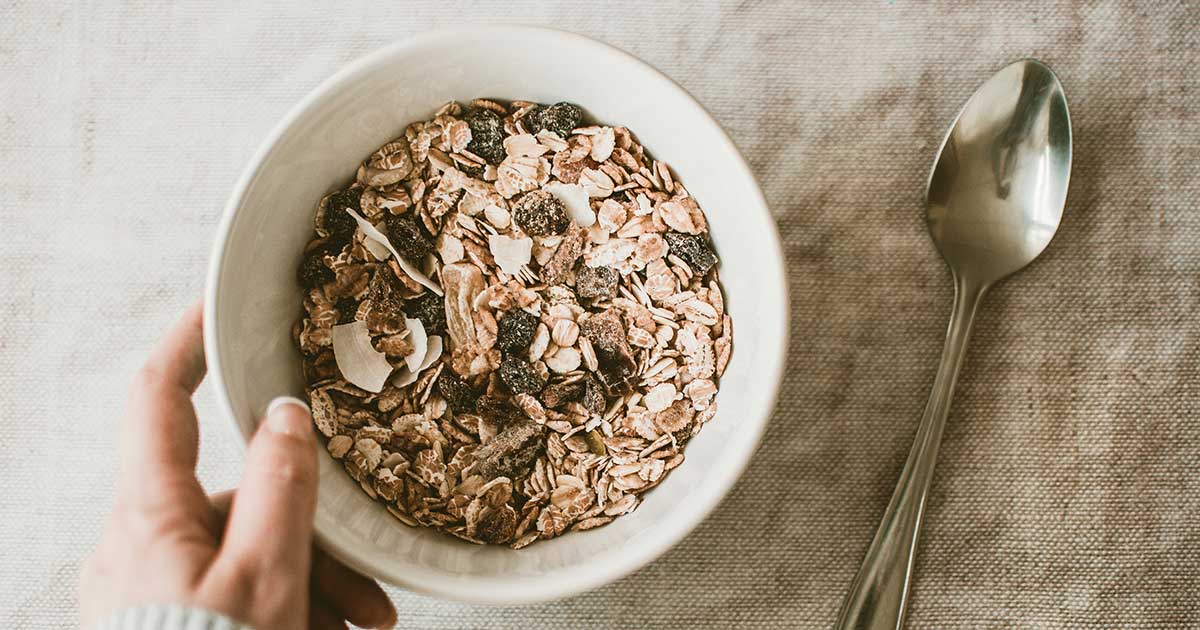MORE TO GAIN WITH WHOLE GRAIN
by Joumana Dabbagh, Nutritionist, Nestlé Middle East
On the occasion of World Cereal Day on March 7, Joumana Dabbagh, Nutritionist at Nestlé Middle East explains why we need to embrace more wholegrain foods for a healthy diet and dispels some of the myths surrounding it. A recent review commissioned by the World Health Organization (WHO) found that fibre in ‘good’ carbohydrates such as wholegrain bread and oats has a protective effect on our bodies

Eating fibre-rich foods, found in wholegrain cereals, pasta and bread as well as nuts and pulses, will cut people’s chances of heart disease and early death, according to the landmark review.
The review recommended that we should be eating at least 25g to 29g of fibre a day, with indications that over 30g is even better. Most people in the world manage less than 20g.
Among those who ate the most fibre, the study found a 15-30% reduction in deaths from all causes such as Type 2 diabetes, colorectal cancer, as well as those related to the heart, compared with those eating the least fibre.
In a comment piece in the medical journal Lancet, Prof Gary Frost from Imperial College London said the analysis “provides compelling evidence that dietary fibre and whole grain are major determinants of numerous health outcomes and should form part of public health policy”.
How to incorporate more wholegrains in your daily diet?
Switching to whole grain is easy – and tasty too!
The good news is, most grain-based foods have a whole grain equivalent:
- White bread to whole grain bread – often known as ‘wholewheat’ or ‘wholemeal’ bread – perfect for lunchboxes!
- White rice to whole grain rice – this includes brown rice, brown basmati rice and wild rice (which is actually a wild grass) – always nice to put a little colour on the plate, and it’s delicious with vegetables.
- Pasta to whole grain pasta or ‘brown pasta’ – tastes yummy!
- Pancakes to whole grain pancakes – how many children don’t like pancakes? And they’ll love these.
Help children to choose brown!
Whole grain foods taste great, but the brown colour of some of them can take a bit of getting used to. Children can be suspicious when their pasta, bread or rice is a different colour than normal. With a little time, they’ll get used to it – and here are some tips that could help.
- Mix white pasta with brown (brown pasta takes longer to cook, so start cooking it and add the white pasta later).
- Gradually reduce the amount of white pasta. They’ll be all brown in no time!
- Sprinkle white breadcrumbs over cooked brown rice – making it whiter and crunchily delicious.
- Make sandwiches with one slice of wholemeal bread and one slice of white – a fun way to get the whole grain into their lunchboxes!
Wishing you a wholesome world cereal day!
GOOD TO KNOW
Brown foods: Are they necessarily whole grain?
Before you rush off to buy whole grain foods, we need to tell you some ‘brown’ foods are not whole grain at all. They may just be brown because of added ingredients like caramel. So when you see descriptions like ‘multi-grain’, ‘high-fibre’, ‘stone-ground’, ‘100% wheat’ or ‘seven-grain’ – they do not mean the foods are necessarily made with whole grain. Read the label to be sure, and look out for the word ‘whole’. If the product is made with ‘whole grain’, you know you’re getting the real deal. And if whole grain is at the top of the list of ingredients, it’s more than likely to be rich in whole grains. (If you’re buying fresh bread from a bakery, there may be no label, so best ask the baker for a whole grain loaf.)





